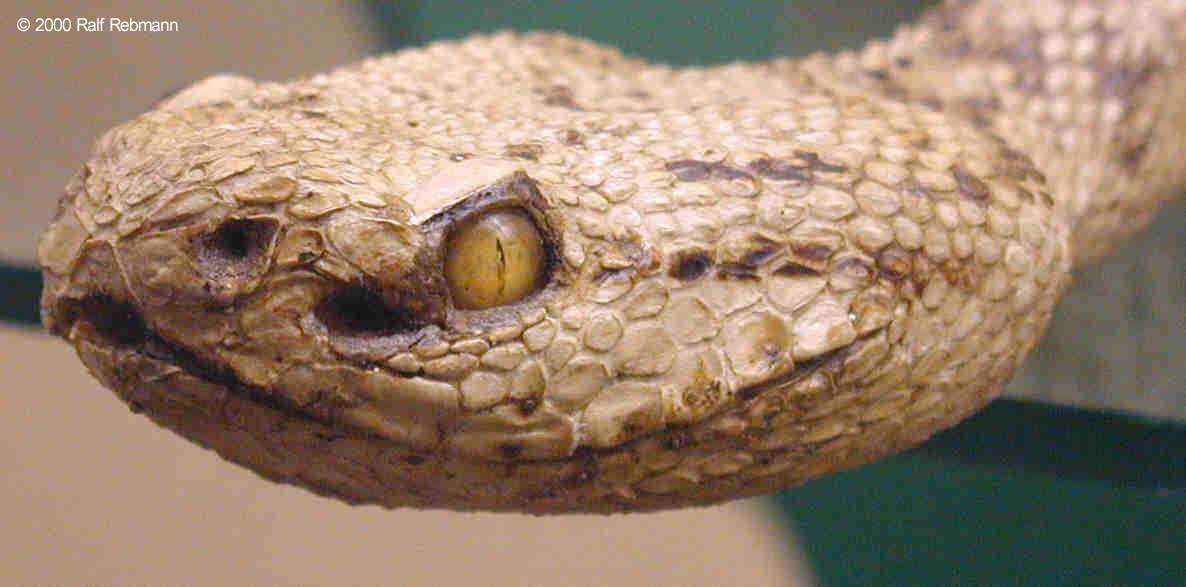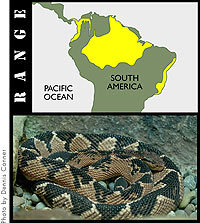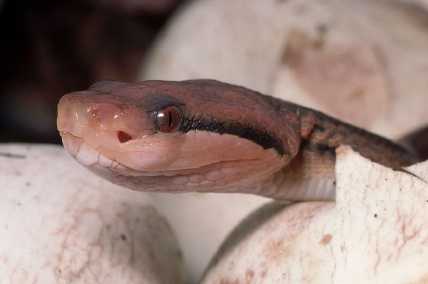 |
The Bushmaster (Lachesis muta) |
| image provided by Woodland Park Zoo |
 |
The Bushmaster (Lachesis muta) |
| image provided by Woodland Park Zoo |
| Background |
| The bushmaster is the largest pit viper in the Americas (pit vipers are strictly New World species), sometimes reaching a length of 12 feet. They are also known as the most deadly of pit vipers. Their scientific name, Lachesis muta, actually means "silent fate" (Woodland Park, 2001). "Silent" because they are notoriously shy snakes, that, if approached, will normally hide or flee. This explains both the low number of bushmaster bites sustained by humans each year, and the lack of comprehensive research on the species. |
|
 |
||||
|
|
| The Bite |
| Bushmasters, like all snakes will use their bites for two purposes: to eat, and to defend themselves. Being the shy, nocturnal snakes that they are, bushmasters rarely bite people. They have, like all other pit vipers, hinged fangs that lie flat in their mouth when not in use. This allows their fangs to be extremely long, reaching lengths of up to 1.4 inches long. Because of their large body size, and the length of their fangs, they have the ability to inject huge amounts of venom into their prey. In fact, the average amount of dried venom yielded from a bushmaster bite is 8 times that of the copperhead (a closely related pit viper) (Woodland Park, 2001). |
| The Symptoms |
| To be bitten by a bushmaster would be a painful experience indeed. The bite would cause immediate pain in the area around the bite, as well as intense swelling. Blood pressure and heart rate would increase quickly. As the venom moved through the veins, edema, hemorrhage and tissue necrosis would slowly begin, while the body would gradually become paralyzed (UCSD Dept. of Surgery, 2000). Respiratory failure would be the eventual cause of death (Tu, 1977). |
| The Venom In Depth |
 |
|
|